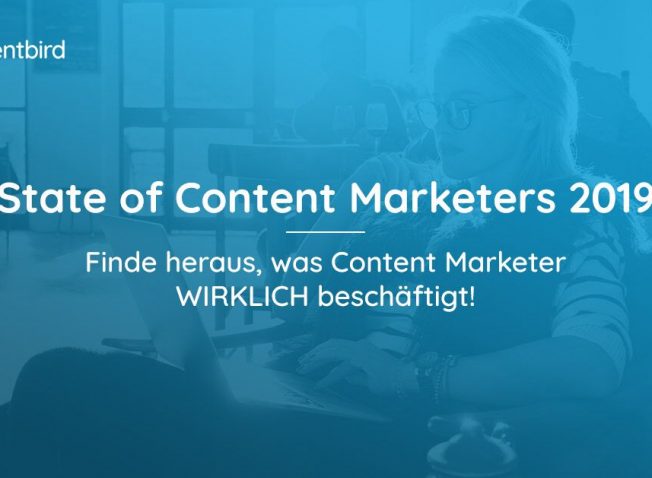AI Marketing - This is where we are with Artificial Intelligence in Marketing!


At the latest after MMC Ventures found that only 40 percent of the agencies that claim to use artificial intelligence actually use it, the question arises: How far have we actually come with this topic?
{{divider}}
AI marketing needs a reality check
If you scan with the Google Alert in which frequency articles are published on this topic, we are miles ahead. But does that mean only on a theoretical basis? AI seems to have arrived in every business sector (and household, too). So, too, in marketing. But here too the question: arrived theoretically or practically?
If one examines the use cases with a marketing mind, the result is somewhat more muted compared to the ongoing GoogleAlert alert.
But step-by-step: The 21st century and digitalization have changed the entire life within society. Artificial intelligences, self-driving cars or talking robots, which were once part of science fiction movies, have become reality today and global companies rely on them. All these technical masterpieces have something in common: they need data to function properly.
Yes, the old Big Data story - but why again?
And why do people always wince at the word? Big Data promises in-depth insights or even forecasts about customer needs, trends and the competition if the information is analyzed precisely. While this offers new opportunities, it also increases complexity.
Marketers who follow content marketing (and who doesn't?) are faced with the task of producing masses of high-quality, yet individual content, taking into account insights from Big Data. Since the buying cycle doesn't start with a sales call, performance marketing has to step up to the plate and make its (lead-nurturing) campaigns demonstrably successful. Potential buyers actively deal with their needs and independently obtain information - pull - and solution ideas.
{{divider}}
Fact Check AI Marketing: what you need to know
Artificial assistants such as Amazon's Alexa, Google's Assistant and Apple's Siri are already playing a role in the business-to-consumer sector. Marketers of business-to-business companies are currently faced with the decision of how to take advantage of this.
And the "old" B2B challenge is throwing a spanner in the works.
Voice assistants work perfectly when they have been used for a while and are familiar with the everyday lives and expressions of their users. This usually requires a clearly identifiable user base. But as a B2B marketer, the message should not only reach a target person or a target family that makes an individual purchase decision, but must meet the expectations of many decision makers at the same time. In the business-to-business sector, purchasing decisions are usually made by several stakeholders - not only on the basis of budget decisions - who also come from completely different specialist areas and thus display different behaviors.
In order to reach each and every one of these target persons with relevant content, data streams must be bundled and interpreted correctly.
{{divider}}
Big Data - now we have the salad
Now we have "supplied" companies with business intelligence tools and all sorts of KPI knives for years. SaaS providers have earned a golden nose and opened the door to upper management again and again with the sentence: "You don't measure KPI XYZ yet? But you should! It will give you insightful insights!" This always seemed to make sense, especially to management, but now the point has come to ask what to do with the data (/some insights). However, the fun of data evaluation is curbed at the latest when it is determined that the data volumes have increased to infinity and an evaluation seems almost impossible. And now?
The growing volumes of data through networked devices and the demands of consumers coupled with technological progress led as a logical consequence to the use of artificial intelligence. In the process, globalization and digitalization became the multipliers of the requirement. With the help of Artificial Intelligence, the potential of data can be exploited. AIs know no fear of Big Data and they don't even shrug their shoulders when the data to be analyzed has doubled - with pattern recognition by AIs, Big Data is finally tradable. The technology expands the scope of human expertise and can identify unforeseen problems.
Excursus: Machine Learning
Machine learning - to be clear - is part of the AI field and focuses on the ability of machines to receive data and learn for themselves. The way it works is that algorithms are modified and deemed correct as they learn more information about the data they are processing.
{{divider}}
AI marketing: successful examples
The easiest way to divide today's successful examples of AI use in marketing into 4 categories.
- Recommodation Engine meets Affiliate
- Hyper-individual customer experiences
- Social media - not dead after all?
- Analysis of customer data - Insights
1. AI in affiliate marketing
Affiliate marketing is growing and feeding many a blogger. But what is the development AI in this area?
A certain refinement of affiliate marketing or even revolution of this advertising technique is possible with AI. AIs have the ability to understand the semantics of new, previously unanalyzed pages through self-learning and to place ads based on this. Through the ability of context analysis, a new level is also reached in the field of online ad placement.
Before ads are placed, the systems can analyze content from the entire World Wide Web in parallel and obtain an up-to-date opinion on it. Based on this, specific content is then shown. Intelligent programming goes so far as to adjust parameters at specific times, places or events AND parameters based on user behavior. Displaying offers for umbrellas when it is raining at the user's location is still one of the "old" use cases. With AI, the matching color and perhaps a handle with initial embossing is displayed.
2. AI and customer experiences
Customer experiences can also be optimized with AI. This involves, among other things, ensuring that consultations can be carried out with the help of chatbots. The web enables the collection of customer and behavioral data in real time and can draw conclusions by stringing together algorithms. A bot is used to process these insights and offer solutions to the customer. The AI enriches the analyses it performs with experience it has been able to draw from the population.
This also meant that it becomes more intelligent with increasing use and can recognize current trends independently. A potential customer is thus able to obtain detailed information through the use of a bot before a consultation or purchase takes place through human-to-human interaction. This saves time for the buyer. On the part of the offering company, a streamlining of the marketing and sales process.
3. AI in social media marketing
Social media marketing tries to use the social effect generated by networks. Companies use this "informal" atmosphere to anchor their corporate brand in the minds of potential customers. Due to the different specifications of the networks, the content must be tailored to the customers.
For example, Twitter, the microblogging platform, only allows posting of a maximum of 240 characters. These circumstances require social media teams to post specified content to each platform. This results in increased effort. With intelligent extensions, firstly, even (simple) content can be created automatically and, secondly, the perfect time to play out messages can be detected automatically.
Social media AI solutions can create a post from existing content that is optimal for the respective network and promote it via this. From interviews or blog articles, the most important facts can be automatically generated in post form, since AI algorithms can understand the semantics. Through the automated analysis of web traffic, internet trends or events, campaigns can be initiated automatically.
Severe weather warnings can be picked up by AIs and then independently turned into a post. For example, online stores can advertise certain products via social media platforms on the basis of meteorological data. Complaint management via social media platforms is also considered another area of application. Intelligent agents recognize and understand not only text, but also images and logos, and can react to them themselves. They can actively intervene and ban content or contain possible shitstorms with arguments.
4. AI Insights
As data volumes continue to grow, marketers find themselves in the position of having more information than they can process. Coupled with the growing demand and the desired transparency of marketing success, the use of AI systems to understand and make deductions from data oceans becomes necessary.
Through intelligent analysis and automatic evaluation, marketers gain access to new customer segments and information and have significantly more options to build campaigns and strategies on these concrete framework conditions. The sequence of advertising measures also plays a major role. For example, some users react more sensitively to advertising banners at the beginning of a website visit than others who, on the other hand, are happy to receive an immediate offer.
Big data can be used to predict how a user will behave. AI can then be used to fine-tune a customer journey. With insights and analyticsDEFINITION algorithms guided by AIs, it is possible to enter into one-to-one communication. Such scenarios are hardly conceivable with manual execution and several thousand users. Nevertheless, companies invest a lot of energy to learn from customer journeys without considering AI systems.
The application of intelligent digital solutions is only slowly taking place in practice, because best practice examples are lacking
{{divider}}
Fact Check: 3 Take-away Notes
- First, artificial intelligence is capable of streamlining processes, promoting the exchange of information, and thereby significantly supporting marketing teams.
- Second, artificial intelligence can perform in-depth analyses about the customer and the environment at a speed that humans could not match. AI analyses do not end with the listing of numbers, but with tangible recommendations for action. AI systems solve the task of bringing all the information together by cumulating data.
- Third, the use of artificial intelligence can improve the overall performance of the department. Not only recommendations for action and individualization become possible, but also the adequate, automated handling of campaigns based on individual customer requirements.
With AI in marketing, every contact can be advised individually and exclusively with a digital footprint. Artificial intelligence is the right tool to organize Big Data and make it usable, ultimately justifying the investments in Big Data projects. The intelligent solutions of today are able to act in a specific area and feed data to each other. Also, the designed AI applications are stand-alone solutions that are interconnected by bridges and, when combined, strengthen their efficiency. If we look at the few examples that AI marketing offers today, these are often only those campaigns that use the term AI as a drawing card for their campaign.
As things stand, the marketing employee remains the driver and thinker. Creative and strategic tasks in particular are (still) his or her responsibility. So, for now, the collaboration of different teams or partners remains human. But we can be happy, because the monotonous and monotonous tasks of pattern recognition will be taken away from us. This will ultimately help us master Big Data and present its introduction as justified.

AI Marketing - This is where we are with Artificial Intelligence in Marketing!
contentbird.blog







